Nothing in the Way of Excellence: A Review of The Batman
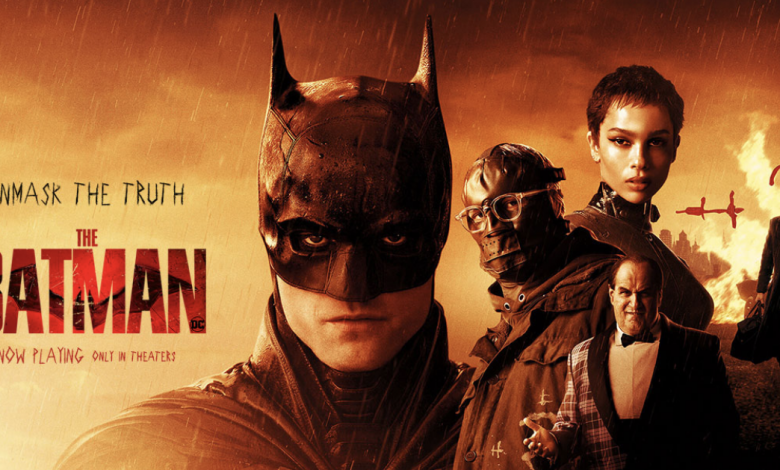
Joe Meola ‘25 / Emertainment Monthly Staff Writer
After several years of development hell, DC Comics and Warner Brothers Pictures have finally released their long-awaited The Batman, the most recent cinematic reboot of the Batman comic book superhero, on March 4, 2022. The film was initially supposed to be written by, directed by, produced by, and star Ben Affleck, who has portrayed the character previously in Zack Snyder’s DC films, but for personal reasons he stepped away from the project, which became a complete reboot of the character directed by Matt Reeves and starring Robert Pattinson of Twilight fame in the titular role.
Spoilers ahead.
The film follows Pattinson’s Bruce Wayne– well into his second year of fighting crime in Gotham City as the masked vigilante Batman–as he begins to investigate a series of elaborate and brutal serial killings carried out by the mysterious Riddler (Paul Dano) in order to expose the corruption of the city. While the core of the film’s plot is a murder mystery-type story with a conspiracy peppered throughout, it is achieved in a very simplistic yet effective manner.

With each gruesome murder, the audience learns alongside Batman more and more information about the corrupt nature of the city through the various clues intentionally left at each scene. For example, the Riddler’s first victim– found missing a thumb– is discovered with a cypher that spells out the word “drive,” leading Batman and police Lieutenant Jim Gordon (Jeffrey Wright) to the victim’s garage where they find a USB (Get it? Thumb, drive: thumbdrive) containing incriminating photographs of the victim. This is very much a common thread throughout the movie: Bad things happen, causing characters to learn more shocking information before the cycle repeats itself, and it works for this film. In the comics, Batman is often referred to as the “World’s Greatest Detective” and is praised for his deduction and problem solving abilities, but no live action depiction of the character has truly portrayed that side of the character, instead focusing on his elaborate gadgets and incredible skill as a fighter (which are still on full display in this film).
Speaking of the character of Batman, Robert Pattinson’s portrayal of the character is phenomenal. Because the character is so early into his crime fighting career, he has not yet learned to balance a double-life. So, even when not in costume, he feels like only Batman and not Bruce Wayne. The absence of an eccentric public Bruce Wayne persona may come as a surprise or even a disappointment to many viewers, and this is an understandable complaint, but the lack of this public identity serves to highlight Wayne’s obsessive, almost unhealthy, dedication to enacting vengeance upon the criminal element of Gotham as Batman.
Furthermore, while many people were very skeptical about Pattinson’s casting as the hero– due to his involvement in the Twilight franchise– audiences will be sold on his portrayal of the character by the completion of his character arc. At the start of the film, Batman is a symbol of vengeance (which the film constantly emphasizes) and a symbol of fear, but throughout the course of the film’s narrative he learns that he must become more. In the final act, following the capture of the Riddler, it is revealed that the killer’s rampage to expose/take revenge upon Gotham’s corruption is inspired by Batman’s own crusade of vengeance. Moreover, when the finale of Riddler’s plan is executed– the flooding of Gotham– it is up to Batman to not only defeat the Riddler’s followers but also save the people of Gotham from the flooding. This results in a beautiful scene in which the hero, using a flare to light the way, leads a crowd of people to safety through shallow waters. This scene in particular cements the fact that, ultimately, The Batman sees a transformation of sorts in the Caped Crusader from a symbol of vengeance to a symbol of hope.
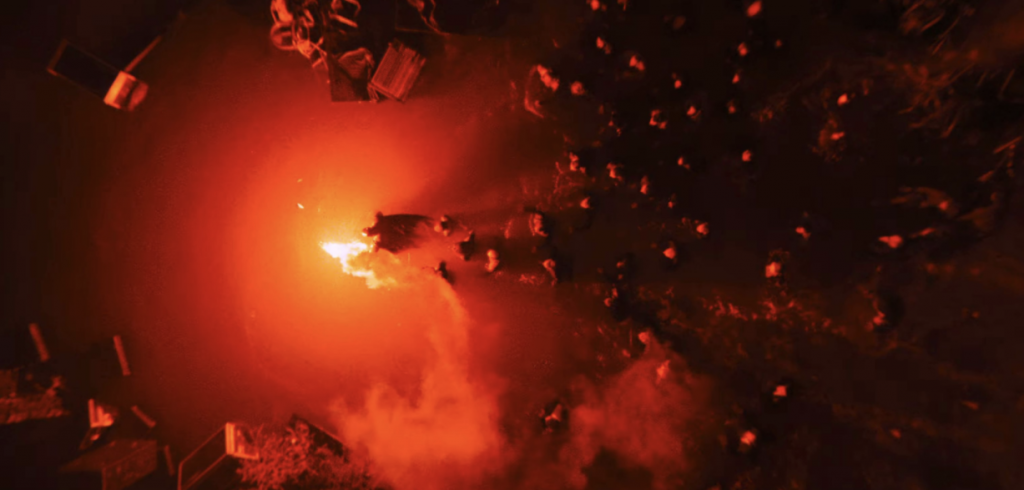
This Batman’s antagonist, Paul Dano’s Riddler, is in many ways a departure from the character fans may be familiar with, as he seems to be a combination of the comic book villain, the Saw franchise, the Batman villain Hush, and, as confirmed by director Matt Reeves, the real-life serial killer the Zodiac Killer. This twist on the character serves Reeves’ version of the DC Universe very well, elevated even further by Dano’s talents as an actor, but with an understanding of in particular the Zodiac Killer inspiration, the character feels a little derivative. Mainly, his costume looks far too similar to that supposedly worn by the Zodiac Killer, the only difference being that it is geen and has a question mark symbol.
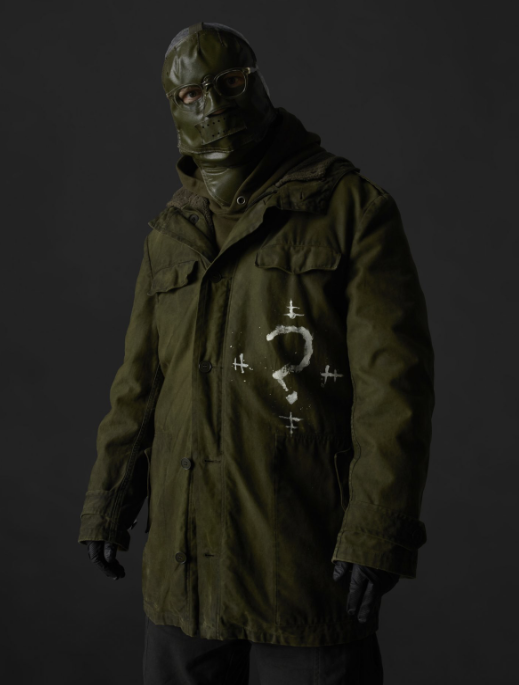
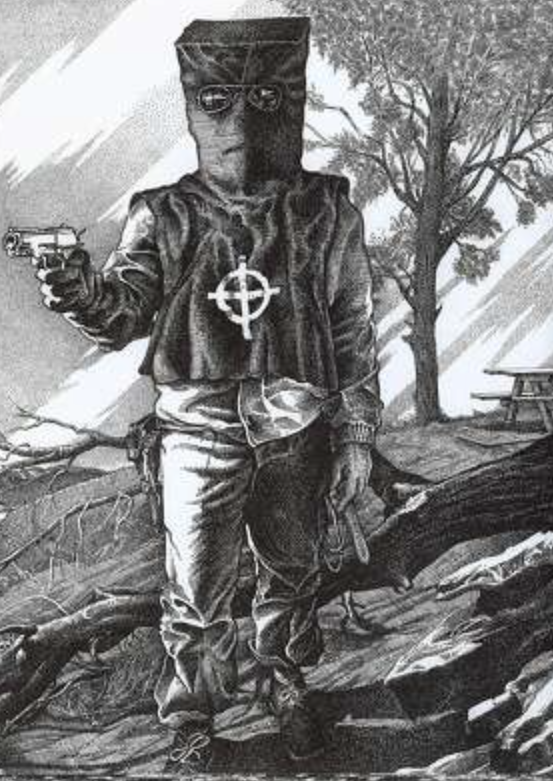
The secondary antagonists of the film, Colin Farrell’s Penguin and John Turturro’s Carmine Falcone, are portrayed very well. Farrell’s Penguin in particular shines in this movie. While it may be tonally much darker than other superhero movies, The Batman is not without its moments of humor, and many of the jokes in the movie are delivered by the Penguin. Furthermore, Colin Farrell is unrecognizable in the role, due to a combination of makeup and prosthetics that truly transform the actor into the villain.

While many consider Batman to be a loner, the character still has his allies, and many iconic Batman allies are present throughout the film. Bruce Wayne’s butler/surrogate father Alfred Pennyworth is not quite as prominent as he is in other Batman films, but Andy Serkis’ portrayal is still very powerful, and the complex relationship between him and Bruce shines in the few scenes they have together. Furthermore, this version of Alfred is very different from previous versions of the character depicted in film. This is due to the fact that he is heavily based on the version of the character seen in the Earth One series of original graphic novels. Both versions served in the British Secret Intelligence and used that skillset to train Bruce to become a crimefighter. In fact, many aspects of the film draw from the Earth One series of original graphic novels. The reveal that Bruce Wayne’s mother Martha–and as a result, Bruce himself–hails from the Arkham family, Thomas Wayne being a mayoral candidate, and Riddler going after the corrupt political figures of Gotham all come from this series. The film does have many other comic book influences, though, which have been discussed by both Reeves and Pattinson.
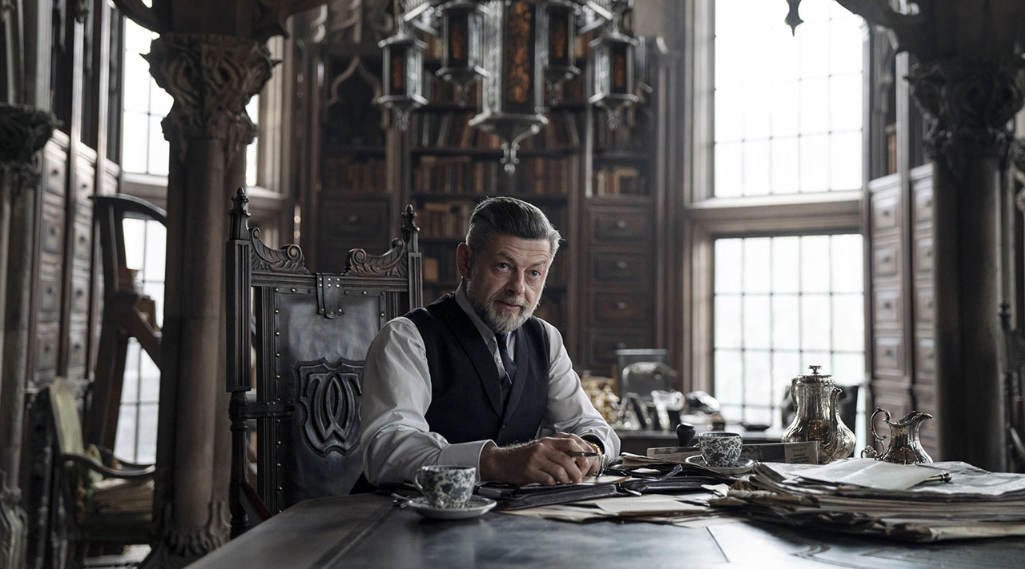
Another major supporting character is Jeffrey Wright’s Jim Gordon. Jeffrey Wright’s performance as Gordon is perhaps the most underrated in the entire movie. He doesn’t have a complex character arc by any means, but his relationship with Batman is portrayed very well; the best way to describe their relationship is as a bromance of sorts, which may be a weird phrase to use for a Batman movie, but it certainly fits.
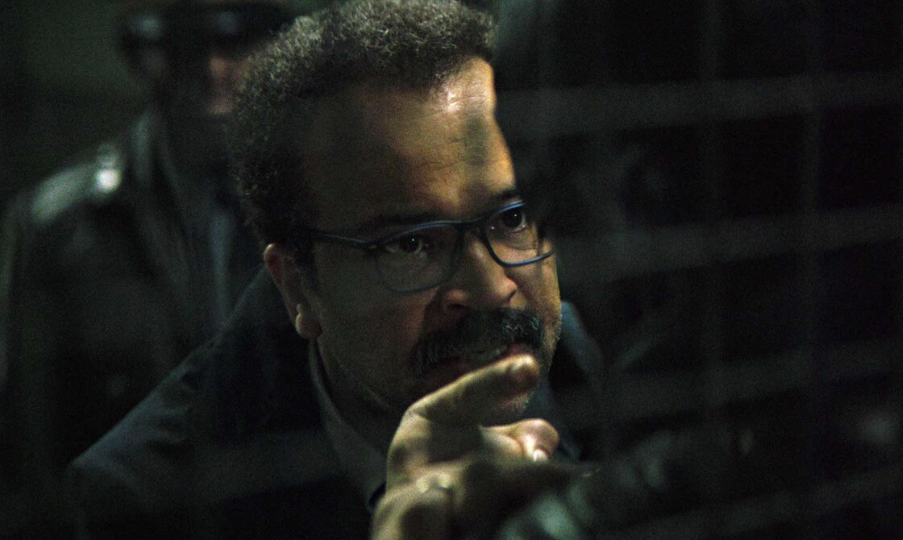
The real star of the supporting cast, though, is Zoë Kravitz’s Selina Kyle. Kyle is essentially the second main character of the film, whose arc involves her working with Batman to investigate the disappearance of her friend, who is linked to the murder victims and Penguin’s Iceberg Lounge. Whie this film is not a love story by any means, there is definitely a romance brewing between her and Batman. Their romance is not a key thread of the film, but the two do grow to care for each other throughout their time spent together, and Kravitz and Pattinson have amazing chemistry.
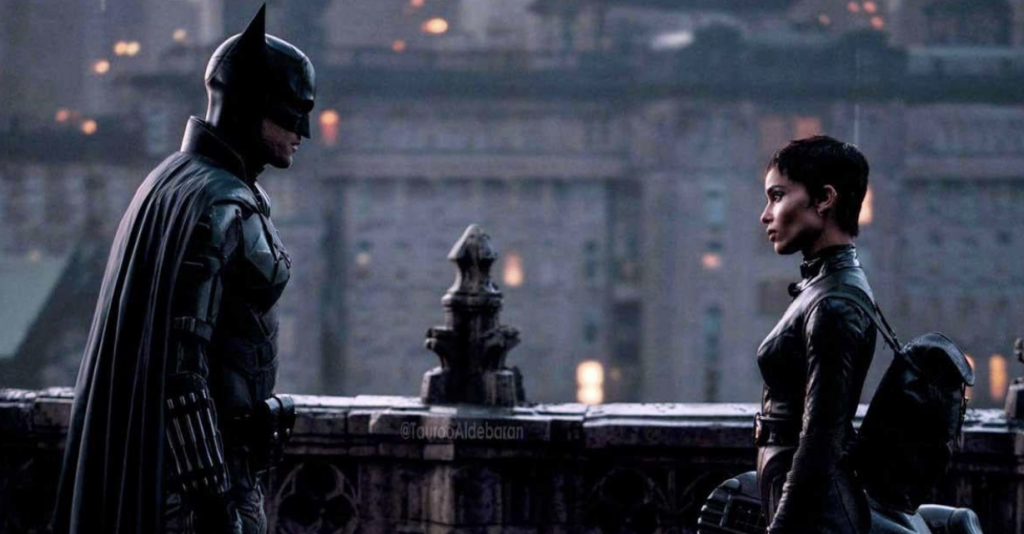
One fatal flaw in the film is Barry Keoghan’s Joker (“Unseen Arkham Prisoner”). He appears in a singular scene towards the end of the film– while he was supposed to be in an earlier scene that was cut but recently released by DC– in which he, hidden in shadow, simply talks to the Riddler in Arkham Hospital before the two begin laughing together. With the absence of the originally-intended earlier scene, this Joker cameo feels unnecessary, shoehorned, and somewhat distracting, (although it is fun and interesting to see that a version of the Joker exists in this world). The Joker’s cameo causes the film to fall into the unfortunate comic book movie trope of referencing characters just for the sake of getting a reaction, rather than contributing to the plot of the movie.
While The Batman is very plot- and character-driven, it still has some incredible action sequences. Much of the action involves Batman brawling with crowds of opponents, but one instance of action that is definitely worth noting is the Batmobile chase scene. First of all, the design of the Batmobile is unique yet incredible, as it looks more like a muscle car and less like a clunky tank than other recent film versions. The chase scene itself, in which Batman chases Penguin through the highway, is incredible. It truly conveys Penguin’s terror at being chased by Batman in addition to Batman’s sheer willpower and determination. In addition, while this is a car chase, it almost feels like a chase from a horror movie, with the Batmobile playing the role of a relentless masked slasher and the Penguin playing the role of a helpless, fleeing victim.
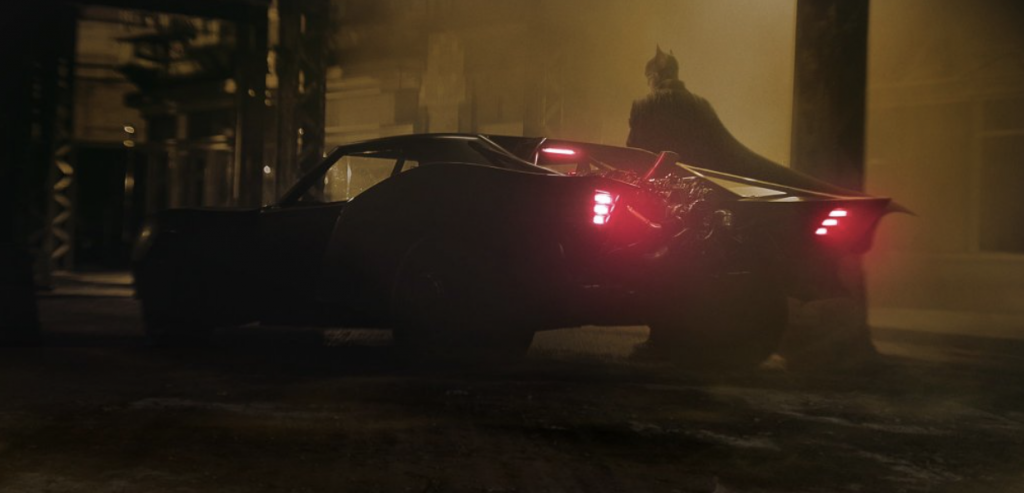
Another intriguing aspect of the film is the costume design. As previously mentioned, Colin Farrell’s Penguin makeup is exceptional, as are the clothes his character wears. Additionally, Selina Kyle’s outfits throughout the film are outstanding, and some are even ripped straight from comic books such as Year One and Darwyn Cooke’s Catwoman run. It would be impossible to talk about costume design in this movie, though, without talking about the Batsuit. Batman’s costume is a bit different than previous versions, but it looks phenomenal, especially considering that each bit of the costume feels like it has its own sense of functionality: The gauntlets store grapple guns, his armor plates house a wingsuit, and the bat logo on his chest can be removed and used as a knife. He even has contact lenses that allow him to capture video! Additionally, the shape and stitching of Batman’s cowl makes it feel somewhat reminiscent of that worn by Adam West’s portrayal of the character in the 1960s television series based on the character, which is a nice touch.
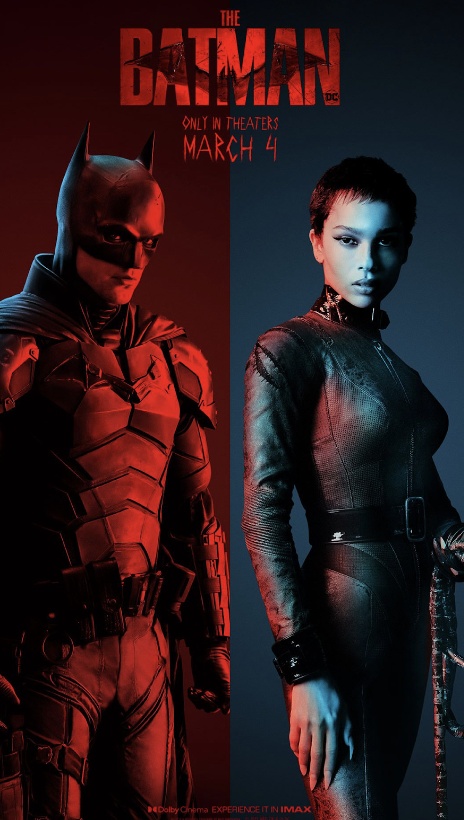
Lastly, Michael Giaccino’s score adds a whole new level of depth to the film. The main theme, inspired by John Williams’ “Imperial March,” resonates throughout the film, further elevating Batman as a powerful, terrifying presence. The Riddler’s theme, a very creepy instrumental rendition of “Ave Maria,” adds to the horror meant to be conveyed by his character. Furthermore, the use of Nirvana’s “Something in the Way” both in the beginning and the end of the movie serve as nice bookends to both the film and the journey of Batman throughout (it’s also just a really good song from a solid album, by the way).

In conclusion, The Batman is a fantastic superhero movie. Even though Batman has received countless adaptations, this film is a welcome addition and holds its own alongside some of the best theatrical Batman films like Batman Returns and The Dark Knight.
Great review with some interesting insights.